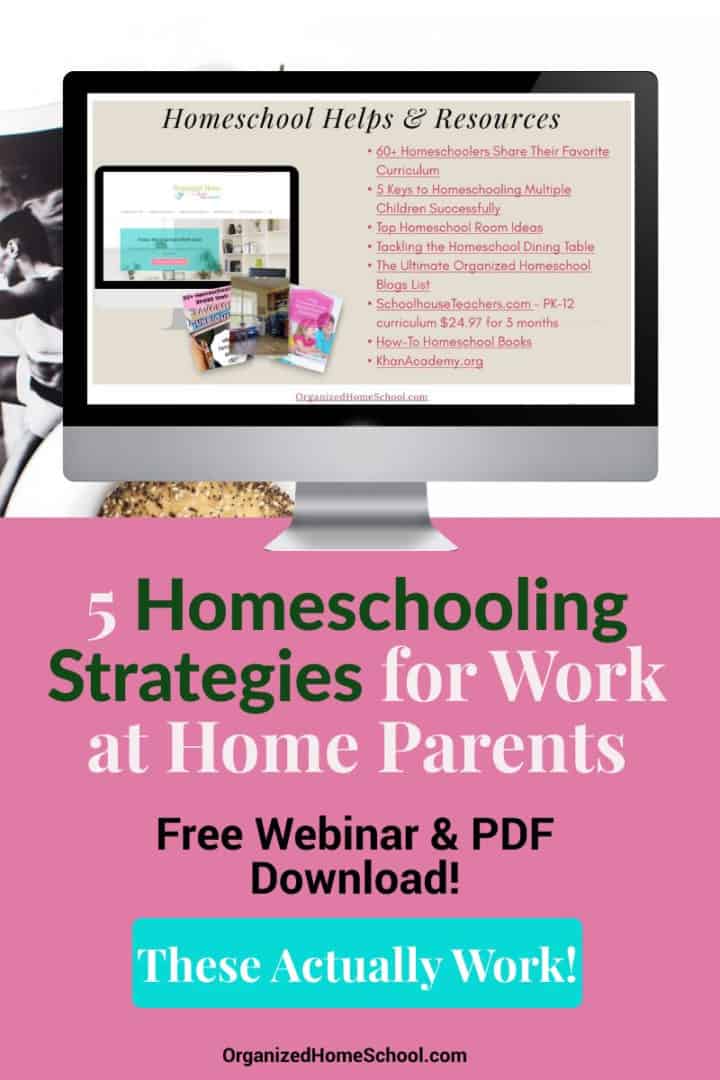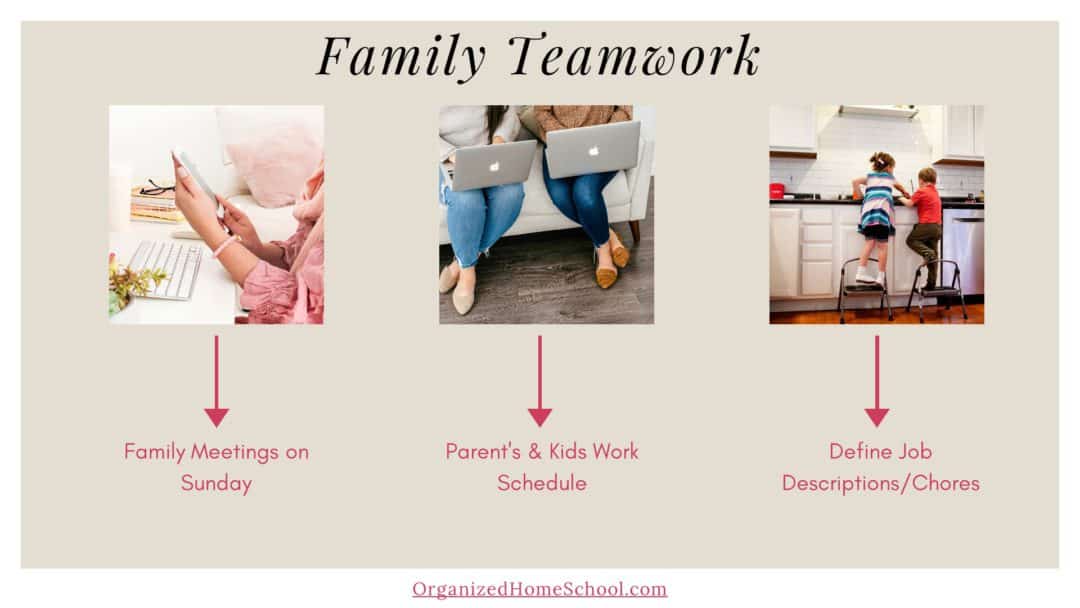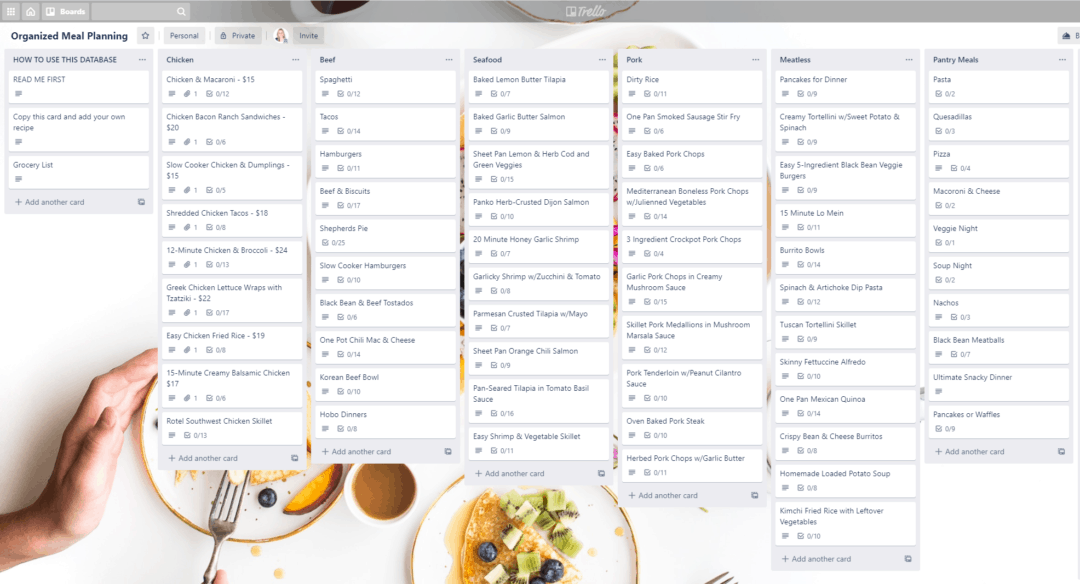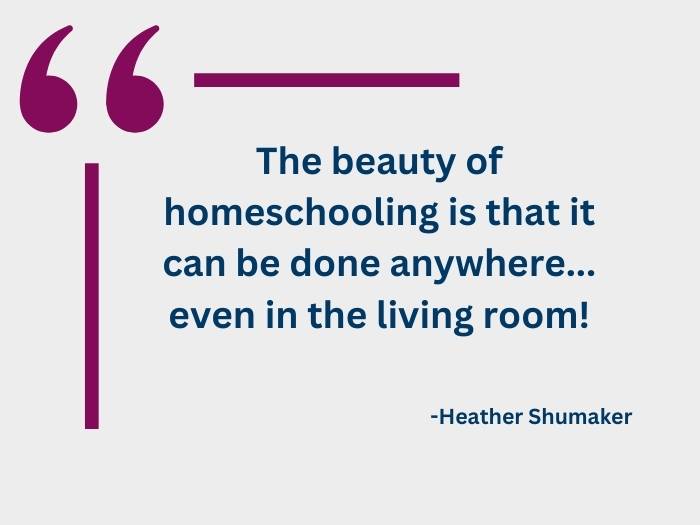Proven Strategies for Working at Home and Homeschooling
Hey everyone!
I wish that we weren’t living under these types of circumstances. Most likely your kids are on lockdown with you and if you’re like us, we have a shelter in place order so we are unable to go anywhere except the grocery store and doctor’s appointments if needed. We all need some homeschooling strategies and homeschool schedules to make this time a bit easier.
So it’s very, very hard.
I’m also trying to run a business at the same time and just like most of you are trying to work also. It doesn’t matter because when you have kids underfoot, I know how hard that can be and when you pile schooling on top of it, it’s just a recipe for disaster.
PIN FOR LATER

I titled this presentation homeschooling strategies for work at home parents and hopefully I’ll be able to give you some tidbits of information that have worked for me in the past and are working for me right now.
I’m on several newsletters and homeschooling groups and so a lot of them have been sharing what’s working for them too. I’m an avid reader so I’ve compiled as much as I can here on some information and examples that might help you out.
So it’s been fun. So I’m in your shoes, I know exactly how you feel. You’re trying to work at home full time. You’re trying to do school, you’re trying to just figure out your rhythm and your routine and just survive and what makes it worse is that we can’t leave our houses in most cases.
So today I want to go over five strategies that I’ve come up with that I feel like are the top five things that need to be put into place to have any resemblance of having a decent, joyful life without going crazy.
ENCOURAGEMENT FOR HOMESCHOOLING WORK AT HOME PARENTS FROM A FRIEND
Before I go into the 5 strategies, I want to share with you what a friend of mine, Susan, posted on her Facebook page the other day.
Susan has 5 kids, ages 13-8. She has kids in 3rd, 4th,5th,6th, and 7th grades. She works full time and homeschooling all 5 has been crazy for her. She had some really encouraging words to share that she gave me permission to read to you:
Hey! Hey! Yes, yes, YOU!
– You who are trying to work full-time jobs while assisting your children with school work. Well, there is a reason why you don’t do both. So, if you feel like this is really hard. It is! This is hard.
– You who are stay-at-home parents, so this stay at home order should be easy for you. Well, there is a reason why you don’t actually stay at home all day every day. So, if you feel like this is really hard. It is! This is hard.
– You who just lost your jobs, but are trying to be strong because your family needs you to be strong. Well, there is a reason why you work everyday to provide for your family. You love them so much. So, if you feel like this is really hard. It is! This is hard.
– You who are “essential” so you are away from your families and you are putting yourselves and possibly your families in harm’s way. Thank you for your service. This is really hard.
– You who are anxious when logically it doesn’t make sense. Well, humans are wired for consistency and right now, the dynamics are changing from day-to-day, hour-by-hour. So, if you feel like this is really hard. It is! This is hard.
…
You were never meant to do everything and be everything. No way. So, do what you can. Let go of the things you can’t. Or, even the things you just don’t want to. It’s ok to say, “Nah, not today.”
…
If that task didn’t get done, but you called that client who was on your mind, that’s great. If your children didn’t get to turn in those assignments, but you got to connect with them, that’s great. If you needed to take some time to mourn what was lost and rest with your loved ones before hitting the job search pavement, that’s great.
…
Give yourself a moment to acknowledge that this is hard. It’s OK that you can’t do everything. In fact, it’s not just OK, it’s impossible. So, if you have to choose, choose people. Choose love. Choose connection. Breathe. In the big picture, this will be just a moment, an event, in your life. Once this passes, we will go back to our lives, work, school, friends, or start the job search. The time will come, but if you don’t acknowledge what is happening is hard and take time to connect, trauma can occur. So, between now and then, practice self-compassion and grace. None of us has done this before.
5 HOMESCHOOLING STRATEGIES FOR WORK AT HOME PARENTS
First, I want to talk about some mindset shifts that we all need to make and some homeschooling myths that you can throw out the window.
Second, What’s for dinner? Simplifying meals because kids want to eat, we have to feed them and that just seems to get in the way of work and homeschooling. So that’s number two.
Third, family teamwork is a must.
Fourth, strategies for working at home with kids
And fifth, how to create your ideal day. It is possible with some consistency and some things put into place.
1. Homeschooling While Working Mindset Shifts and Homeschooling Myths
Mindset shifts
I want to clarify that you’re not really homeschooling. I know we’re calling it homeschooling, although my local school district is calling it in-home learning, which I kind of think is funny because they don’t want to call it homeschooling.
But it’s actually, I heard a blogger the other day say it’s crisis schooling, which is so true because our country’s in a state of crisis.
We’re trying to stop this virus dead in its tracks.
We’re all having to stay at home.
We can’t find toilet paper. We can’t find ground beef in the grocery stores. It’s crazy.
We’ve never been through anything like this.
And when you’re a homeschooling family, you normally don’t have those things that you have to worry about. And also when you’re homeschooling, you have prepared for that for sometimes months in advance. When you decide to homeschool your children, you don’t make that as a light decision.
You don’t make that decision overnight. You think about it for a few weeks, a few months. A lot of times you browse curriculum, you get to pick and choose what you’re teaching.
We didn’t have that choice this time, that’s why we’re calling it crisis schooling. We’ve all been thrust into this overnight.
We just never went back to school after spring break!
We’re not choosing the curriculum. The teachers at the schools are giving us the curriculum that we have to now help our kids with. And most of us have more than one child.
So we’re dealing with multiple children, multiple ages, multiple teachers, multiple subjects. It’s crazy.
So this is new to me too. I have over 10 years of homeschooling background. I feel comfortable teaching my kids certain subjects, but for the most part, I was able to pick and choose what I was teaching and how I was going to teach it in those years.
We don’t have that choice here.
So give yourself some grace.
You’ll do just fine.
Reading homeschooling blogs can be very helpful and seeing how they do it with their schedules and even what curriculum they use and what they teach, but a lot of it does not apply to what we’re dealing with today.
So give yourself some grace and have some peace that you’re not doing it wrong.
You’re not going to ruin your kids if you accidentally teach them something wrong. It will be corrected in a later year.
Try not to stress out about getting the lessons done perfectly.
Also, don’t try and mimic public school. Homeschooling does not require eight hours a day. You’ll find out that you can finish rather quickly. I would say preK and kindergarten, you can finish within an hour, even less than that actually. For first through fifth grades,you can easily finish in two to three hours. You could be finished by lunchtime.
Junior high and high schoolers, they’re going to take a little bit longer and it may be three to four hours, but none of them are going to take all day long.
You have to realize that when they’re in public school, they’re doing a lot of waiting around for the other students. And there’s a lot of different going to and from classes, having lunch breaks, going to recess, music, all of that stuff that we really don’t have to do right now.
The main subjects we need to focus on to make sure our kids are okay are reading and math. Hitting the core subjects each day is key.
So don’t try to become a teacher. Still focus on being mom and dad and connecting with your kids.
Don’t make tears come out because you feel like the teacher’s breathing down your neck, sending all this schoolwork home and you know that your children are going to be ruined and fail. I really don’t see that happening. There’s no way.
My friend I mentioned earlier that posted on Facebook, she’s director of a nonprofit, she’s working full time and she helps foster children get placed in homes that’s part of her job.
She has five children. She spends Mondays doing 31 subjects for each child, filling out lesson plans from the teachers, making a calendar for each child with their Zoom calls on there and what they are each supposed to be doing Monday through Friday.
She deals with foster children and she sees the homes they’re coming out of and you know all of you here on this call or reading this blog post, you’re here because you care and you want to make sure you’re doing what you need to do to make sure your kids are okay.
After all this is said and done, just think of the kids that don’t have parents that care. They’re not going to be getting the same support that we give our children.
I’m just saying give yourself some grace if your kids are having a trouble keeping up. I would just stick to the core subjects for sure.
And you know, take a day off and relax. They will not get behind. There are going to be other kids that are going to be behind, not by their own fault but just because they don’t have the support and teachers are going to have to compensate for that. There’s going to be a lot of review going on, whether it is at the end of this school year or next year when we all start back.
So take a deep breath!
Homeschooling Myths
First of all, it does not take all day to complete all the subjects. When I was homeschooling my older daughters, we never took all day to school. In fact, my ninth grader, she would be done by noon every day because, she was disciplined and we got on it as soon as she got up. But it doesn’t take all day because you’re not dealing with 30 students in a classroom. You’re dealing with only your kids and you’re giving them one on one attention when needed.
School does not have to happen from eight to four like the public school and Monday through Friday. You can homeschool whenever you want as long as you don’t have a zoom call that’s live with a teacher.
You can schedule it around your work schedule and I’ll talk about that later, about time blocking, which really, really helps.
You can homeschool in the evening.
You can homeschool on the weekends.
If you’re having a really bad day or a busy day with work, skip it today and double up tomorrow. Like I said, it doesn’t take eight hours a day. If you skip one day, do two days worth of work the next day.
Just be open to being flexible. That’s one of the keys.
Another myth is that parents aren’t qualified to teach.
Well, yes you are.
You may not know trig or calculus, but there are resources out there either from what your teacher sent home to help you, or websites such as KhanAcademy.org.
If you haven’t gone on there yet, definitely check that website out. It has K through 12 even the very hardest subjects. It has tutorials and they’re correct. They’re not just some YouTube video somebody posted up. That is my go-to resource if I can’t teach something or don’t understand what the subject matter is. I’ll go there to either brief myself or have my child watch the video. And so many times, it just clicks with them. He can explain it a lot better than I can sometimes.
So you may not have a degree in calculus, but that doesn’t mean you can’t help your child learn it. So don’t let that get you hung up.
Homeschooling moms usually don’t work. We have this idea that if you homeschool, you can’t work.
I know a lot of homeschool moms that work full time outside of the home and their children are homeschooled and they just simply homeschool at night or on the weekends or their kids have been taught how to independently learn and they do their lessons independently throughout the day.
When mom or dad come home that night, they review what they’ve done, they answer any questions where they know that they didn’t understand and they’re good to go. So there are a lot of homeschool families that have both working parents.
2. What’s for Dinner? Simplify Meal Planning
So the second thing I wanted to talk about is mealtime. That just always seem to be a struggle for me personally.
I don’t like to cook. I would rather go out and buy meals.
But I know that’s not healthy and it’s not within our budget.
So I had to come up with some kind of system that saved my sanity.
I also got so tired of hearing the kids say, I’m hungry, I’m hungry.
Half the time they’re just bored. So we had to nip that in the bud also.
Especially the times that we’re going through right now, we can’t get all of the snack foods and all the items we’re used to getting at the grocery store. So what we do bring in the house, we want to monitor and make sure they’re not eating it all the first day we bring the food home.
So we have established some guidelines in our home and I wanted to share those with you.
First of all, the timing of your largest meal of the day can be changed. Most of the time, your largest meal of the day is dinner. And that’s usually the time if you have little ones, they’re the most cranky.
If you are working all day long, then you come to five o’clock and like, Oh, what’s for dinner? And it’s just an added source of stress.
So I needed to get that out of my life. So I said, okay, how can I problem solve mealtime?
So first of all, we try to eat our largest meal of the day at lunchtime because we are usually finishing up school then and I haven’t started my focused work time yet.
I’ve still got the energy so I’ll go ahead and kick the largest meal of the day right then and get it out of the way.
My kids will eat it then, but my husband eats when he comes home from work.
Around five or six-ish, we’ll either eat leftovers or we put together something simple like sandwiches or what we would normally have for lunch.
So if that works for you around your work schedule, then be flexible with meals.
Cook when you have the most time available.
As far as the snacking all day long goes, we had to establish kitchen hours of operation.
So we said, besides breakfast, lunch and dinner, you get snack time at 2pm. If they ate breakfast before 9am, then a 10am snack is allowed as well.
So that helps minimize the boredom eating.
If you establish the rule, explain it to the kids. Tell them when the kitchen’s open and the rest of the time it’s closed. You are not allowed to go in and take something out of the pantry when it’s closed.
Have the specified times posted on the refrigerator to remind them and just point to it when they ask or are caught in the kitchen at the wrong time.
Eventually, they’ll stop asking.
Also, I really encourage supporting local businesses as far as meals go.
We’ve been using doordash.com and having meals delivered to us. There’s also other services like Waitr.com.
If you can, utilize those if it’s in your budget do so. That relieves stress about what’s for dinner.
Also, we actually have tonight a food truck coming to our neighborhood and so we’re able to order online and then we all get to pick up our food from the food truck at designated times so that we we’re still practicing social distancing so that’s awesome also.
Local restaurants are hurting right now, so it’s great to support them when you can.
I really encourage you to try new foods.
I usually do Walmart grocery pickup and when I go to order my groceries now most of the stuff is out of stock.
You can’t buy toilet paper, paper towels, paper plates, eggs, beef. It’s been crazy.
So what I have been doing is trying new meals that are available, you know, freezer meals or brands that I normally wouldn’t buy.
We’ve actually enjoyed trying new things.
And then last of all, as far as meal planning goes I’ve got something that I developed for myself before all this happened that really helped me out in meal planning.
I call it the organized meal planning Trello board. I don’t know if you guys are familiar with Trello, but it’s a free app on your phone that you can get or on your desktop computer you download it. You can use it for anything. It’s kind of like Kanban planning. You create buckets and lists of items and so I have a screenshot of it here and I have my recipes that I know that my family likes added in here. There’s a little card for each recipe and I’ve got a list for chicken, beef, seafood, pork, and so on.
I’ve even put my price on some of them so I can try to stay within my budget for the week. Over to the right hand side, if you scrolled on the Trello board, which it doesn’t show here, I’ve got week one, week two, week three and week four where I can just drag these recipe cards over to each week and then make my grocery list from there. I go online to Walmart grocery online ordering, order those ingredients and Boom. I’m done meal planning. I know what we’re going to have for the rest of the week.
So hopefully that helps you get some ideas and some strategies for meal planning.
3. Family Teamwork is an Essential Homeschool Strategy
The next strategy is family teamwork. When you work outside the home and your kids are gone all day, I’m sure you probably do have chores for them to do when they get home.
But when you’re home all day long with each other and you’re working, and your schooling, and you still have a house to keep care of, it can get messy and fights can ensue. So I really encourage family teamwork.
You’ve got to take on the role of CEO of your home and manage it like you would a company.
Streamline routines, chores, meal planning, your work schedules, and your school schedules.
It’s like a breath of fresh air because everybody knows what they’re supposed to be doing.
So the first step is to have a family meeting preferably on Sundays, before the week starts where you all sit down together.
It only has to be 15 minutes.
You look at your schedule for the week and go over if you have meetings or conference calls for work and the kids’ schedules from their teachers of what’s going to be required for school.
Have your kids involved no matter what age and let them help you determine what days of the week who has to do what. The buy-in will be much greater if you let the kids help make some of the decisions.
For instance, if mom has a conference call at one o’clock on Monday, then you need the older sibling to babysit the younger children. Specify what activities they can do together, have it written down, have it scheduled out and have everybody on the same page. Therefore there’s no surprises and you know that you have it covered.
Finally, define the job descriptions and the chores that need to be done.
It all has to depend on how clean you want your house. During times like these, it’s okay to let the dishes stay in the sink for a day if you need to. If you’ve got a really busy workday or homeschooling didn’t go as planned, they will be there tomorrow. Okay?
I love a clean house. I love clean spaces and clean counters. My website’s called organized homeschool after all and I really love organizing.
But you know what?
When you have so much on your plate, you have to give yourself grace and you have to be flexible and let things go a little.
You can still have routines in place to try to get at least the necessities done. I’ll talk about some job descriptions for chores that different age groups can do in a few minutes, but part of that family meeting is to have a list written down of chores that need to get done?
Name who is going to do it? And if you need to train them how to do it, train them just like you would do so on the job.

Related Post:
Creating Your House Chores List: 5 Easy Steps to Follow
We don’t have to do spring cleaning right now just because it’s spring. List the tasks in each room that you want done. Now list the frequency. How often do you want them done? Do you want them done daily or do you want them done once a week, twice a week?
Get a calendar out and list out the jobs that need to be done.
Then enlist your team. Write down who’s going to do it and explain the process to that person.
Once you do this one time, you don’t have to do it ever again.
Be sure to post it somewhere in the house where everybody can see and you just follow up.
Yes, it’s a little bit of work upfront, but you will be so glad you did it because then you can live in a house that’s not cluttered. It will relieve so much stress.
Chores for Younger Children
Two to five-year-olds
- Pick up their toys after they play
- Help make up beds with older siblings or with you
- Feed pets with supervision
- Put dirty clothes in laundry baskets or even help you sort the laundry after it’s washed. They can put them in piles for you
- Bring small bathroom trash cans to you so that you can dump the trash out
- Wipe down counters with a wet rag
Six to 10-year-olds
- Put dishes away and load the dishwasher
- Vacuum sweep, mop
- Help prepare meals with your help or with older siblings
- Dust
- Make beds and clean their own room
- Wipe down counters and cabinets
Chores for PreTeens
- Change light bulbs
- Mow the lawn
- Rake leaves
- Change their own bed sheets
- Do their own laundry
- Do the dishes
- Prepare simple family meals
Parents, you don’t have to do it all! It’s amazing what kids can do if you just show them and allow them to do it.
Chores for Teenagers
- Replace vacuum bags
- Iron clothes
- Minor repairs around the house
- Meal plan and prepare meals
- Do the online grocery shopping and budgeting. That would be an awesome life skill to teach them right now
- Babysit their younger siblings, especially while you may have to be working during that time frame
- If they’re over 16, they should be doing everything you can do.
All of these chores teaches life skills that prepare them for adulthood. It’s going to help them because right now, this is a real emotional time for kids.
They have been pulled out of their school and their social environment.
They’re stuck at home with their parents. Not all of them want to be there.
And yes, it’s amazing that they have cell phones and they can still do FaceTime with friends, but it’s still not the same as being in person.
We need to keep them busy. We need to keep their minds busy with school and we actually need to encourage them to help out with the family.
Because you guys, we all need to work as a team. That’s the only way this is going get done.
And we’re going to get on the other side of it without going completely crazy.
4. How to Work at Home with Kids while Homeschooling
Working at home with kids is fun right?

Designate a Work from Home Space for You
First of all, it’s awesome if you can have a designated workspace. That’s a picture of me sitting at my desk.
That is my dining room.
That’s what I use for my work at home office because we have four kids and we only have a three bedroom house.
And so as you can imagine, there’s two kids in each bedroom. Mom and dad have our own room. There is no place for an office for me.
So I made the dining room into my office and it is completely open to the kitchen, the living room and the entry way.
People walk through the house all day long. I’m right in the middle of it. But it’s still a designated workspace.
The kids know this is mom’s desk and do not touch because I have things in certain spaces and I don’t want items disappearing. I need pens and pencils, my calculator, so they know not to touch.
So setting boundaries is extremely important.
You may not have a room, you may not have an actual office that you can designate, but you can still have an area that you call your own.
And that’s what you definitely need to do.
Preferably a room with a door would be great to not have as many distractions. But if you’re like me, you don’t have that option.
I highly recommend it’s got to be a decluttered space with only your work related items.
Get a standing desk! They are great.
I get mine out when I want to stand and work for a while because I’ve been sitting all day.
You can put the standing desk anywhere. You can put it on the bar, the kitchen counter or you can put it on just about any table.
It gives you a designated area where you can put your stuff.
You need plenty of light. Natural light is best.
And like I said, set boundaries. Don’t let your kids touch your workspace. Make them understand that is yours.
And if you can make it comfortable and professional, it’s going to help you get your work done faster.
Time Blocking is a Game-Changer
Time blocking has been a game-changer for me.
The best thing you can do is get a timer. You know, one of those kitchen timers that ding when time is up?
Or you can set your iPhone alarm, whatever works.
The great thing about a timer with smaller kids is that you can set a timer for 20 minutes, just like the Pomodoro technique explains.
I don’t know if you’re familiar with the Pomodoro technique, but it’s when you work 20 minutes, take a five to 10 minute break, then work another 20 minutes.
And what that allows you to do is have focused time. You only work on that one task for 20 minutes and it’s amazing.
If you know you only have 20 minutes to do something, you will get so much more done because if you know you have an hour, you’ll drag it out.
It really does work.
So if you know, you only have 20 minutes, your kids are playing with an activity for 20 minutes, then get to work.
It’s key to know what you’re going to do beforehand so that you can just get right on it.
And like I said, train the kids, tell them, “When dad sets this timer, you’re going to be doing this. I’m going to be over here. Do not come over here unless the house is on fire.”
The first couple of times they’re not going to listen. That’s okay.
Just keep redirecting them back. And I promise eventually they’ll catch on and they’ll understand.
Have Mandatory Quiet Times in the Afternoons
If you have little ones, that would be a nap time.
If you have kids five and up that don’t nap, this is a time where they’re in a designated space. It might be their bedroom or it might be your room. Give them some books or some quiet activity that they can do alone. This needs to be for at least an hour.
This is good even for teens.
Also for schooling, you can have a designated reading time. This is another block of time that you can get some work done. Tell them for the next 30 minutes here’s your book that you’re going to read and put them in a quiet spot and tell them “you’re going to stay here until the timer goes off.”
Determine if You Are a Morning Person or a Night Owl
Determine when your body is most alert and able to work on focused tasks.
Are you a morning person?
Or a night owl?
Don’t fight. Just work with it.
What’s working for me is, I start at 8 pm and I work until 2:00 am.
I’ve tried waking up at 5 am and it will last for a few days, but I am not a morning person.
So I work from 8:00 PM to 2:00 AM since my little ones go to bed at eight.
I know that I’m going to have focused distraction-free time and I can get six hours of work knocked out and then during the day I’m more available for them.
What I’m doing for work during the day is mainly answering emails, answering phone calls doing things that don’t require focused work, like a tax return or a financial statement.
I encourage you to make a list of things that don’t take a lot of focus, like answering an email or even brainstorming ideas for a new project that’s coming up.
You can do those type of tasks on your laptop in your little ones playroom while they play around you.
You could still be working but working on things that it’s okay if you’re distracted a little bit, it’s not going to hurt anything.
So make a list of things that you can do with distractions and things that absolutely have to be focused time and carve out time blocks that you can do that work for those particular tasks.
Be Intentional with Family Time
Whether that’s at dinner time or for a couple of hours after dinner, you want to plan some family time together.
You’ve got to plan it because if you’re working at home and homeschooling, before you know it the day’s gone and you’re just mentally and physically exhausted and all you want to do is sit on your phone and scroll through Facebook.
Be sure to connect with your kids and ask them, “How’s school going? What things are working for you? What do we need to change?”
Make sure you are troubleshooting those issues so everybody is getting their needs met.
So plan time for family time.
Determine Your “ONE THING”
Have you read the book titled “The ONE THING” by Gary Keller?
The One Thing concept literally changed my life. It basically teaches you to make a list of tasks that you need to do that are personal or work-related.
You then determine what’s the one thing that you can choose that will actually take care of three or four of the other things or make life easier for you?
What’s the one thing you’re struggling with the most?
If it’s the meal planning part, then spend some designated time and brainstorm. Google it and find a system that works for you and your family and stick to it. Then you don’t have to think about it again.
If that will make life easier for you, then do it.
So identify that one thing that you’re struggling with the most and then just do a deep dive into it until you find the answer. A lot of times it only takes an hour to do that.
So that’s an awesome concept that I just really grasped onto a while back.
Dealing with Distractions
So we all have experienced this in the last few weeks. We’ve got our kids home with us ALL THE TIME.
Well, we’re going to have a lot of distractions working at home, whether its the kids that are underneath your desk while you’re working or the teenagers that are on the phone with their friends.
Or the TV’s running in the background, the radio’s playing or even our notifications from our emails and social media pages flickering up on our screens.
There’s always something going on so we have to minimize these as much as possible.
1. Buy Noise Cancelling Headphones
One of the things that I just absolutely love are noise-cancelling headphones that I got.
You can listen to music with them too. You can even answer phone calls with this pair.
I mainly use them to help me tune out the noise of the TV or the kids talking in the background and I can totally focus on what I’m doing, whether it be writing an email or making a presentation.
These have really been a lifesaver for me to be able to focus and have some quiet.
2. Email and Social Media
When you’re time blocking and working, try to avoid answering emails.
Have designated times that you check emails. Maybe three times a day. If you want to check them at, 10 o’clock, two o’clock and five o’clock, just designate certain times a day to check your email.
Then whenever you’re checking them at the designated time, try to handle it right then if you can or if it has to be done later, add it to your to do list for later in the day or tomorrow. But take action towards it.
Don’t just check emails all day long.
3. Set up Rewards for Yourself
You can use things like email and social media as a reward.
Tell yourself, “If I can focus for 20 minutes until the timer goes off, then I’ll be able to scroll Facebook for five minutes before I go to my next 20 minutes of work.”
Set up a reward system for yourself and that way you can use those distractions as rewards instead.
4. Consistent Routines Keep Distractions at Bay
Now talking about kids, you know, consistent routines are good.
Children need to know what your expectations are. That is why a family meeting on Sunday is so important.
Whether you let the kids sleep in and they wake up, they eat their breakfast and get started on school when they want or if you require them to be up and start school at 8am, be consistent with your expectations.
Base your routines on what times you need to work each day.
Kids thrive on routines.
They need them and when they know what to expect, they actually act better too.
They know exactly what they’re supposed to be doing and what mom and dad are doing and everybody works together in sync.
So at those times that you have to do focused work, whether it be a conference call or a client phone call, a meeting or a tax return in my case, plan some engaging activities for your kids so that they are busy too. Plan activities that they do not need your help with.
What I did last week was I ordered some crafts on Amazon.
I ordered a Wiki Stix Traveler Playset so they can build little things. They don’t need my help with that, so for my five and eight year old, I only bring out the Wiki Stix when I need to sit at my desk and do something without interruption. They happily played with that for 20 to 30 minutes.
I told them to stay at the dining room table and play with them until the timer goes off.
I also ordered some other small things they could do on their own including a Window Art Set and Paint by Sticker Book.
These items are new to them and they’re only brought out when I have to work and I can’t be with them to help out.
So plan some activities like that.
5. Utilize Technology
I know that screen time is a no, no in a lot of families and you want to monitor it. We do that also, but let’s be realistic here. You guys are trying to get work done. So am I.
If your kids have done all their chores and they’ve done their schoolwork and have nothing else to do, let them get on the phone with their friends. Let them play a video game.
There are a ton of educational activities like ABCmouse.com for the little ones. My friend Kristen blogs at thisroutinelife.com and she has a new post that lists “35 educational websites and shows for young kids”. Be sure and check out her post.
I read one mom was using monopoly money. The kids would do a chore, they’d earn money and they could buy screentime with that money. She set up a price for every 15 minutes or 30 minutes. So come up with a system like that. Hey, if you want screen time, do this first. This chore is worth $5 worth of monopoly money and that will earn you 30 minutes of screen time.
That’s also a good way to work as a team and to actually get some productive stuff done.
6. Get Outside and Burn Energy
Getting outside is so helpful for our mental state.
Our kids need to be outside too.
If you have a laptop, you can get work done outside and let your kids play in the backyard.
We all need exercise. So go for a walk.
It takes us 10 minutes to get that breath of fresh air and a renewed spirit in you to where when you get back inside you feel like tackling the next project.
Let the kids run off that energy and then they’ll be happy to sit and watch a movie for two hours so you can get a lot of work knocked out.
7. Teach Your Kids the Pomodoro Technique
I mentioned the Pomodoro technique earlier where you do something focused for 20 minutes, as you set a timer and then you take a five or 10 minute break and then work another 20 minutes.
Do this with your work AND teach this to your kids.
Have them on that same schedule. Tell them “You’re going to do this for 20 minutes while mommy’s doing my work for 20 minutes. And then when I get done, we can do a fun thing together for 10 minutes.”
If you do that and fill their buckets up and connect with them, they’re not going to be bothering you as much as if you were just trying to get work done for four hours straight.
As much as you can try this technique because it has really worked well for me.
8. Set Up Play Stations
A lot of other work at home parents also set up play stations. This would work great for 10 years and younger.
With my eight-year-old and five-year-old, their room is set up where there’s a Barbie station, there’s a Lego station, a baby doll station, and an LOL doll station.
I organize their room to where like things are together and then they can play for 20 minutes in each station.
When the timer goes off, they rotate to another station.
This way, they’re not playing side by side with each other where fights happen, but they’re still in the same room and they don’t feel alone. They’re doing separate things so that they’re not in a constant fight.
9. Use Special Bins
Have special bins like I mentioned the crafts earlier that I ordered from Amazon. You can pull out some toys that you know they haven’t played with in a while, put them in special boxes up in the closet and only get those out at times where you have to work and then it seems new to them.
5. Create your Ideal Day
I know it sounds like it’s some fantasy land that you don’t think is possible, but let me tell you, it can be possible.
Take some time this weekend just to sit down for an hour and brainstorm.
You know you’ve got a homeschool. You know you’ve got to work. You know you’ve got to keep the house decently cleaned. You know you have to feed everyone.
- What would your ideal day look like?
- What time would you have dinner?
- How much work would you get done?
- What would the kids be doing for their school?
- How would they act?
Brainstorm and do a brain dump. Write it all down.
Once you have it all written down, prioritize it.
- What can you not live without?
- What has to be done?
- Delegate what you can
- Delete what you can
- Divide and conquer!
Now schedule it all.
Related Post: 10 Unique Homeschool Schedules from Veteran Homeschoolers
If you click on the post above, that’s going to a blog post that I created that has 10 homeschool schedules. Keep in mind these are homeschooling moms. Some of them do not work full time. These are schedules that they use year in and year out with curriculum that they picked and that they have chosen. So I doubt that you could follow them exactly, but you can at least get some ideas. I love looking at homeschool schedules for large families. Families that have six or more kids. I don’t have that many kids, but I love seeing how they organize things. I can glean information from them and take ideas and pick and choose what might work for our family.
So take some time to look at these schedules.
On Khanacademy.org, they have a new popup on the homepage that give some sample schedules for work at home parents during this crisis. They even have it broken out by age group like pre-K through second grade and so on. So if you need help explaining something or teaching a subject to your child, go look at the schedules on khanacademy.org for your child’s grade level. You’ll be sure to find some help there if you’re running into a block of not knowing how to teach something.
Create Your Ideal Day Map Trello Board
Another tool I want to mention is my create your ideal day map Trello board.
Above is a picture of the Trello board I created for my Ideal Day. The very first column says brain dump. That’s where I was talking about just listing out every single thing you have to do. This includes work, chores, schoolwork for everyone in the family. I then color code and label each task card I create by child and by the type of work it is.
Then you simply drag everything into the tomorrow bucket and the today bucket. I’ve got time blocks on here that I use like 9 to 12, 12 to five, and my 8 to 2 work schedule. I simply move the task cards that everyone should be doing that day in the appropriate time block.
I time block everything!
Then you are able to analyze it all and you can see if you’re being realistic if you can get all this done in one day and if not, you can move it around
Now for some other helps and resources around the web…
60+ Homeschoolers Share Their Favorite Curriculum – I did a giveaway last month and I had homeschoolers share what their favorite curriculum was and what age groups they were teaching. So that is a resource that was awesome to see what other people are using.
5 Keys to Homeschooling Multiple Children Successfully – This was a guest post from a friend of mine that has many children and she touched on how to teach multiple kids when you’re teaching different ages and grades and how she does it. It’s really helpful to see how she does it.
Top Homeschool Room Ideas – It’s always fun taking a peek into other homeschoolers rooms and you can see in the picture above, the front picture…that was my homeschool room when I was able to have a designated room back when we lived in Corpus Christi. I had my desk and then I had the school table with the little chairs for the kids to sit at and we did our school work there. It was so nice to have a designated room. But that hasn’t always been the case.
Tackling the Homeschool Dining Table – That’s when we used a dining room table for our homeschooling. I have tips on what’s the best way to organize homeschool when you have two or three kids sitting at the same table working on three different subjects and three different grade levels. So be sure to check that out.
Schoolhouseteachers.com – I’ve used Schoolhouseteachers for several years. If you want to supplement or just even learn some activities to do with your kids pre-K through 12th grade to keep them busy, this is a great resource. It’s only $24 for three months and that’s probably all you would need. They also offer unit studies. To get more creative with your schooling, I encourage you to follow your child’s lead. Once they’re done with their regular schoolwork for the day, if you see that they’re really interested in something like space or the planets, let them follow that interest. If you go to schoolhouse teachers and join, they offer multiple unit studies based on different themes.
“How-To” Homeschool Books – If you want to read some books that show you how to homeschool from beginning to end and what you should be teaching in each grade go to this post for some really good books.

There were some questions that you guys had submitted earlier that I want to make sure I covered. Also if you want to submit more questions right now, go ahead and do so in the comments below and I’ll try to answer those for you.
- How do I hold my kids accountable for their work when I’m too busy to go behind them and check it during the day?
Well, first of all, that depends on your child’s age. I think definitely setting up some consequences needs to happen for any age. I have a friend that has a ninth and an 11th grader and she said that the night before, they always go over what Zoom calls they have the next day with teachers and what lessons they have assigned for the next day so that they know what the expectations are. Then if they don’t turn in their work on time or if they get a C or below, they don’t get their phones. They get their phones taken away for the next day. Right now during this shelter in place that we’re under, those phones are very valuable to these older kids because that’s their only way to socialize. So that has really motivated her kids to get their work done!
For my younger ones, I usually hold screen time as a consequence. If the work doesn’t get done on time or they don’t put forth their best effort, then they don’t get screen time and I’m not going to constantly go behind and check them. At the end of the day, I make sure things were done, make sure they know what they’re supposed to do first and then leave them to it. With my third grader, I’ll set her up and make sure she knows what needs to be done. We read over a few of the examples and then I go work or help my preschooler at that point. She knows she can come ask me questions if it’s not a certain time block where she can’t, but she knows if she gives up or she throws a fit and doesn’t do it, then she’s not getting screen time the rest of that day. So set up some consequences ahead of time. Make sure they know what they’re supposed to do and then you don’t have to go and constantly check on them.
2. How do you manage three school aged kids that all require your assistance with homework? Ages seven, nine and 12.
I really think in this case that I would do it on a rotating basis.
First of all, I’d schedule your ideal day. Figure out when is your work time and have a scheduled time just for homeschooling. With ages seven, nine and 12, it should not take them longer than two to three hours to do their schoolwork each day. So say for instance, you setup homeschool time from 9-12, just be sure you have that time allotted for yourself to able to help the children at that time and identify which topics they can do independently. Like handwriting. They’re not going to need your help for that really. Or if it’s math, they will probably need more help. The 9 and 12 year old can do reading on their own. The seven year old is probably going to need more help probably with reading. So rotate your subjects. If you’re working with your seven year old on math problems, make sure your nine and 12 year-old is doing something that they can do independently. Then schedule what your nine year old needs the most help with and you can have your seven year old doing something like handwriting that you know he or she won’t need you for.
So set up your school time to where you’re rotating, you’re telling the kids, okay you’re going to work on this subject while mom or dad’s helping brother or sister with this subject because I can’t help you right now. And if you do it that way, it should work itself out.
3. How do we make sure our children are learning the material?
Well, first of all, your job as the mom or dad in this situation is just to make sure your children are doing the material that the teachers have assigned. If you feel like your child’s struggling with something, ask their teacher for help or go to Khanacademy.org and go to that grade level that they are in and look for some links on the subject. See if the way he explains it, clicks with your child. If it’s not clicking the way the textbook is explaining or the way you’re trying to explain it, then go there. This also goes back to accountability to make sure there’s consequences set in place ahead of time to make sure the children are actually doing their work.
I think as we go through the upcoming weeks and we start seeing test grades and homework grades coming back, the teachers are going to identify where most of the kids are not measuring up and they’ll probably modify how they’re approaching things. So I don’t feel like as parents, it’s our job to make sure they’re mastering a subject, although we can. If you’re also trying to work, give yourself some grace and know that there’s going to be a lot of review going on next year!
4. How do you maintain any semblance of a schedule while trying to work and dedicate time to teaching and also strategies for juggling both homeschooling and remote work at the same time?
Make sure you have a schedule. Sit down and figure out what your ideal day would look like and try your best to make that happen. Identify the things that you’re struggling with the most and just problem solve that.
If you identify that one thing, then a lot of other things will fall into place. Time blocking has been a lifesaver for me. So dedicate certain times to things and try the Pomodoro technique with your children and yourself so that you each know what everyone’s doing and what the expectations are.
Those family meetings are invaluable when you just sit down with everybody and you make a game plan and show that you’re all in this together. It really helps with the connections that you and your family have together.
5. How can I be most effective for my kids? I have changed the work schedule from 1 to 9:00 PM in order to teach and build as much real world application in each day. And we do school from 8 to 12:30.
I think that’s great! If it’s working, I think that is being effective. If it’s not working for you, then tweak it until you find a schedule that does work and be intentional about your time. Planning is very important. I think it’s a must to make sure everything’s happening and everybody’s doing what they’re responsible for doing. For more real world applications, look up some unit studies on the internet for what your child is studying. Do some extra hands-on projects to make it more applicable if you have the time.
6. I am homeschooling a soon to be three year old. How do I keep my three year old’s attention without overwhelming him?
First of all, three year olds or the pre-K ages of three to five don’t need to be sitting and doing workbooks more than 30 minutes at a time. I would say at most an hour a day. You may disagree with me, but I’ve seen homeschoolers go overboard and just make a three year old sit and do handwriting and try to learn how to read for a couple of hours a day and they’re just not built for that at the age of 3 and 4. They need to learn by exploring and by imagination play. You can use maybe 30 minutes screen time on ABCmouse.com or an educational app like that. Maybe 15 minutes handwriting in a workbook. You can get them some M and M’s or cheerios and help them count or categorize them in colors. Do fun stuff like that. Make learning fun. Don’t make it a chore, because you definitely don’t want to snuff out that love for learning at that young age. So give yourself some grace and relax a little bit because at three it’s okay if they play all day. They do not have to be learning how to read or do any kind of structured schooling.
7. How many hours of instruction is needed in a homeschool environment?
It depends on the child, but most children that are on grade level, should only take two to three hours at most. That includes high schoolers as well. Three to four hours at the most because like I said, it’s one on one attention. They’re working independently. A lot of times they know what to do, they get their work done and they have a ton of free time to explore their own interests and hobbies.
8. What are strategies for two levels of learners, strategies for a younger student who only wants to do what he wants to do?
Well, that kind of speaks into the discipline and the challenging section. What really comes out and is evident a lot of times when we homeschool and we’re stuck at home all day is we really see things about our kids that we didn’t see before.
Parenting is hard.
So I just say take one consequence or one action at a time. If he or she is not listening try to do a root cause analysis.
Why do you think they’re not listening? Is it, you’re making them sit there too long? Do they need to do school in chunks of 10 minutes at a time? Do they need to do school standing up?
I had one of my children that I homeschooled for many years. She would do cartwheels and walk around the whole room as I read her history book to her. It drove me crazy! You could not have convinced me that she was actually listening to what I was saying, but every time I would quiz her she would give me the right answer. So some kids just need to move around when they’re learning.
So see how your child learns best and try to make that environment the way that they can learn and you’ll find what clicks. Some of it may have to do with obedience also. This is a great time to do some practice skills on obedience training depending on how old they are. Set up some scenarios and tell them to do an obstacle course and do certain things and see if they can actually do it.
9. What are some tips on creating an organizational scheme for kids to follow? Knowing that both parents in the household are also working full time and remotely with lots of phone calls and video conferencing?
Time blocking is essential. If there’s a way for you guys to tag team where one parent does homeschooling while the other is working and then switch that would be optimal. If you have both parents at home, it’s actually a benefit because you’ve got two people. So if you have both parents at home, try to work your work schedules out to where you’re both not working at the same time.
10. My son has been working great independently on his schoolwork as my husband and I worked from home. But in the evenings after dinner is cooked, I find we’re all wanting to disengage from the day by surfing our phones or drawing. Any advice on staying engaged as a family in the evening? It’s a lot harder to ask questions about our son’s day to get conversation started since we’re here.
You know what? Even though you’re in the same house with your kids 24/7, that really doesn’t mean you’re connecting. I know my teens. They would spend all their time in their rooms if I allowed them to and I wouldn’t hardly have a whole conversation with them all day long. So you have to be intentional. If you feel like the after dinner hour is when you all kind of zone out and you haven’t really talked to each other about anything meaningful, then ask your son, “What was the most interesting thing you learned today in your schoolwork?”
Then whatever he answers, try to get in a conversation about that. The thing with your kids is picking something that they’re interested in.
And then and honestly, it’s okay to relax. This is a very hard time of trying to do both schooling and work. And so it’s okay for you to have some time for self-care. If that’s scrolling on your phone to wind down, that’s okay. As long as everyone is getting what they need, you’re fine.
Now if you find that your teen or your children are getting depressed because of the lack of socialization, then be intentional and try to create ways for them to maybe have a Zoom call with their friends or FaceTime with friends. You can play board games together as a family. Grab out those board games that nobody ever touches. You have to be intentional and you don’t have to do it every night, but maybe once or twice a week would be beneficial to all.








